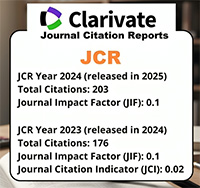Proliferation and bystander suppression induced by membrane and flagellar antigens of Trypanosoma cruzi.
Resumen
We have studied, in vitro, proliferation induced by flagella (FE) and membrane (ME) antigenic fractions of T. cruzi epimastigotes, as well as their regulatory effect on the proliferative response to PPD (Protein Purified Derivative). Crude flagella as well as bands from Western blots of flagella and membrane of epimastigotes were tested. Crude flagella elicited higher proliferation in mononuclear cells from patients with Chagasic cardiomyopathy (CDM) than in patients with no evidence of cardiac pathology (INF). Fractionated antigens induced a lower proliferative response, in intensity as well as in frequency, than the crude extracts. With FE, bands between 150 and 24.3 kDa (B3 to B18 with the exception of B4 and B13) induced higher CPM (Counts Per Minute) in CDM. In INF only bands B7 (87.3 to 80.1 kDa), 9 (69.8 to 64.6 kDa) and 13 (45.4 to 41.5 kDa) had high CPM. ME bands also elicited higher proliferation in CDM. However, only 5 out of 14 bands gave CPM higher than 1000 in CDM and none in INF. The mean down regulation (DR) of most bands was similar in both groups. But the frequency of relevant DR elicited by FE was significantly higher in CDM. In contrast the frequency of up regulation (UR) was higher in INF. Bands 13 and 14 of ME did not induce DR in most INF. The discordance between the frequency of relevant DR in CDM and INF was more evident with ME than with FE. The frequency of (UR) was 50% or higher with all ME bands in INF, but, lower than 12% in CDM. The higher UR in INF and of DR in CDM, suggest the presence of some balance or interaction in INF that is lost in CDM. In ME there might be antigens that could be relevant for the immunoprofilaxis of Chagas' disease. The difference in the clinical status of the two groups seems to be associated with the recognition of different groups of antigens together with variations in the nature of the regulation of the response of mononuclear cells to these antigens.




















